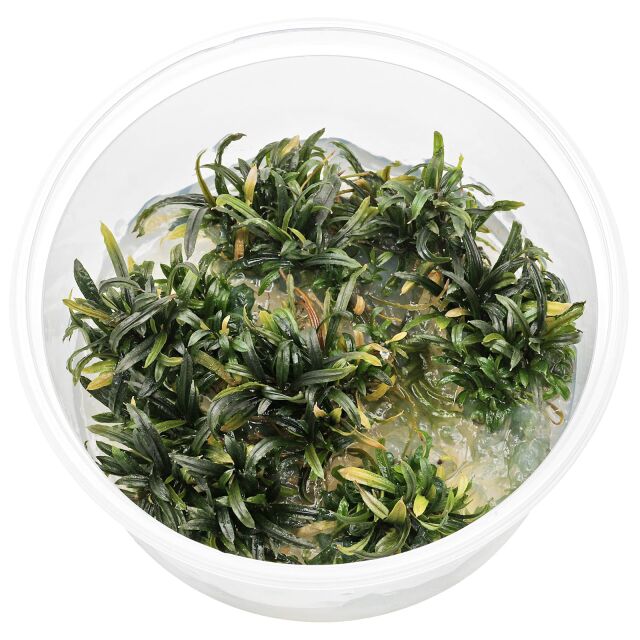



Bucephalandra filiformis
- Also known as Bucephalandra sp. "Rosmarin" and "Rosemary"
- Very narrow, smooth leaves
- Tufted growth
Item question
We’re here for you!
Please enter your question and e-mail and we’ll contact you as soon as possible. It usually takes us up to 24 hours during business days to respond.
Thank you for your question!
Thank you, we’ll get in touch!
Close window
You already sent us a question.
Please wait a few minutes
Description
This unique, small Bucephalandra got known among German-speaking hobbyists as Bucephalandra sp. "Rosmarin" ("Rosemary"). It is the species Bucephalandra filiformis, scientifically described in 2016, native to montane rainforests in the Maligan Highlands in Sarawak, Borneo. There it occurs as a rheophyte (adapted to strong water current) on mossy sandstone rock along streams.
The very narrow, small, relatively rigid leaves have an even or only faintly wavy margin, in contrast to the similar Bucephalandra belindae with markedly undulate leaf edges. Thereby Bucephalandra filiformis resembles certain small Aridarum species, however its inflorescence features clearly match the genus Bucephalandra. The leaves are dark green with reddish tones underneath and on the very short leaf stalks. The rhizome grows rather compact and branched, causing in dense tufts of leaves. The plant grows very slowly. We have been propagating this Bucephalandra in our aquariums for more than one year already.
As aquarium plant, Bucephalandra filiformis needs some attention. It can be fixed to rock or wood, where it attaches itself by its roots eventually. As well as other Bucephalandras it does best with medium lighting, constant CO2 and nutrient supply and good water current. Rapid changes in the culture conditions may lead to detached shoot tips, sometimes also rotting rhizomes, so it is recommendable to set the plant in already established tanks. This applies in particular to young plants from tissue culture cups. When the plant has grown well and has developed a multi-headed stand over time, shoots can be cut off and reattached for propagation. Propagation is easy by cutting shoots from bigger, well-grown plants.
With its tufts of small, very narrow, even leaves, the "Rosemary Bucephalandra" is a speciality among the attached plants for the hardscape. In contrast to similar Aridarum plants that recently popped up in the rarity trade, its aquarium suitability has already proven.
How many plants do I need?
General information
Please choose a variant to see more information.
| Item no. |
|
| EAN | |
| Weight | |
| Shipping weight |
Customers ask customers
You have questions about this product? Ask other customer or our support team about this product!
Customer reviews
One review
| 5 Stars(1) |
|
| 4 Stars(0) |
|
| 3 Stars(0) |
|
| 2 Stars(0) |
|
| 1 Star(0) |
|

This was the most pleasant surprire from aquasabi, I got one small in vitro cup, it gave me around 30 rhizomes!